Share the post "Soccer Red Card Rules (Official With Examples)"
Red cards in soccer change the way a game goes. That extra player makes a big difference. This can make an interesting game, while one team tries to break down the opponent as they defend and try to counter-attack.
It can seem like the game is over for some teams, so it’s essential to know the red card rules. Here are a few things we will cover in this article;
- What a Red Card Is
- When Red Cards Are Given
- Red Cards Examples
- The First Red Card
The red card rule is among the most important for you and your team, so let’s examine what they mean.
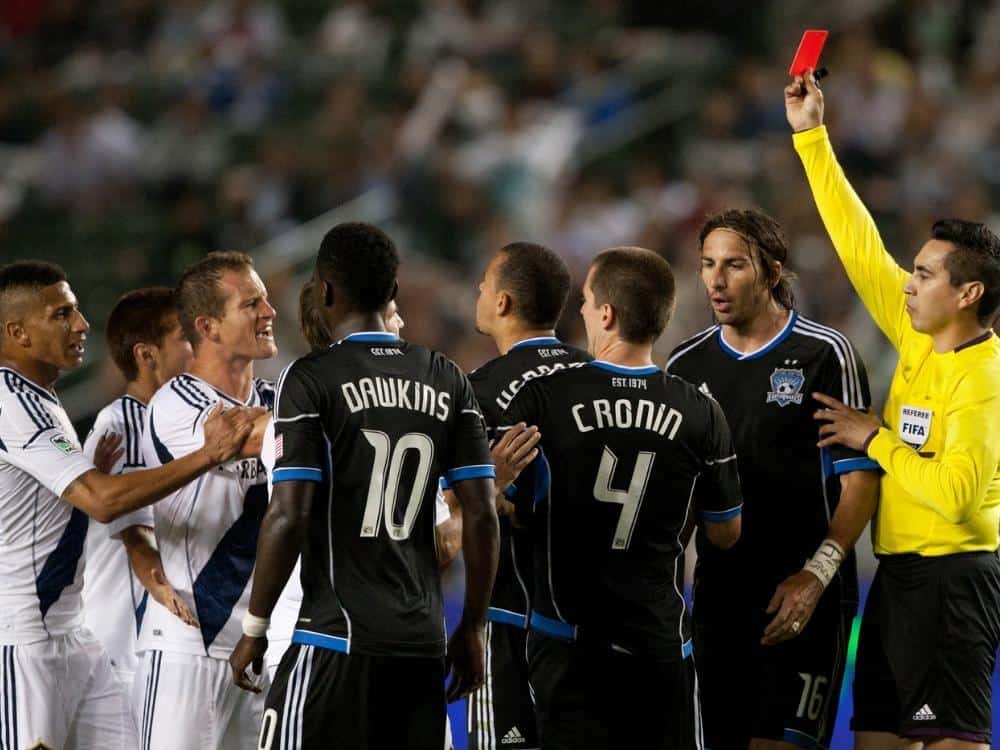
- When Do You Get a Red Card in Soccer?
- Red Card Soccer FAQ
- New Rules For Red Cards
- Red Card Rules For MLS + EPL
- Official Red Card Soccer Rules
- 7 Rules For Red Cards In Soccer
- 7 Reasons for A Red Card + Examples
- History of Red Cards in Soccer
- Process of Appealing a Red Card
- Potential Outcomes of the Appeal
When Do You Get a Red Card in Soccer?
A red card is given when a player uses “excessive force.” This can be an aggressive tackle that endangers an opponent or misconduct, as outlined in the rules below. A red card results in a player being sent off in soccer. It signifies they have committed an offense serious enough to warrant dismissal from the current match. Common red card offenses include:
- Serious Foul Play – Tackles with excessive force endangering the safety of opponents. Sliding tackles with studs showing are often red cards.
- Violent Conduct – Punching, kicking, biting, spitting, or violent behavior, even if not against another player.
- Denying Obvious Goal Scoring Opportunity (DOGSO) – Deliberate handling/fouling to stop a clear goal chance, especially by the last defender.
- Second Caution (Yellow Card) – Receiving two yellow cards in the same game, even for separate minor offenses.
- Offensive Language/Behavior – Verbal or physical abuse directed at referees/other players/officials.
A red card results in immediate dismissal from the current game. The player is also suspended for at least the next match. It takes seriously unsportsmanlike or dangerous conduct.
In this article, I will take you through how a red is given so we can avoid it as players, coaches, or parents. Knowing the official rules helps us play smart but fair, and we’ll learn how to tackle the safe side of the law. Being strong in the game is a significant factor in competing. It’s a physical game.
Red Card Soccer FAQ
New Rules For Red Cards
Previously, if a player fouled an opponent in the penalty box and stopped a goal-scoring chance, the attacking team would be awarded a penalty, and the player would be shown a red card.
Now, this has changed – only if a foul in the penalty box is considered a red card on the rest of the field will the player be sent off. So, there is no ‘double punishment’ for fouling in the box. A penalty is enough.
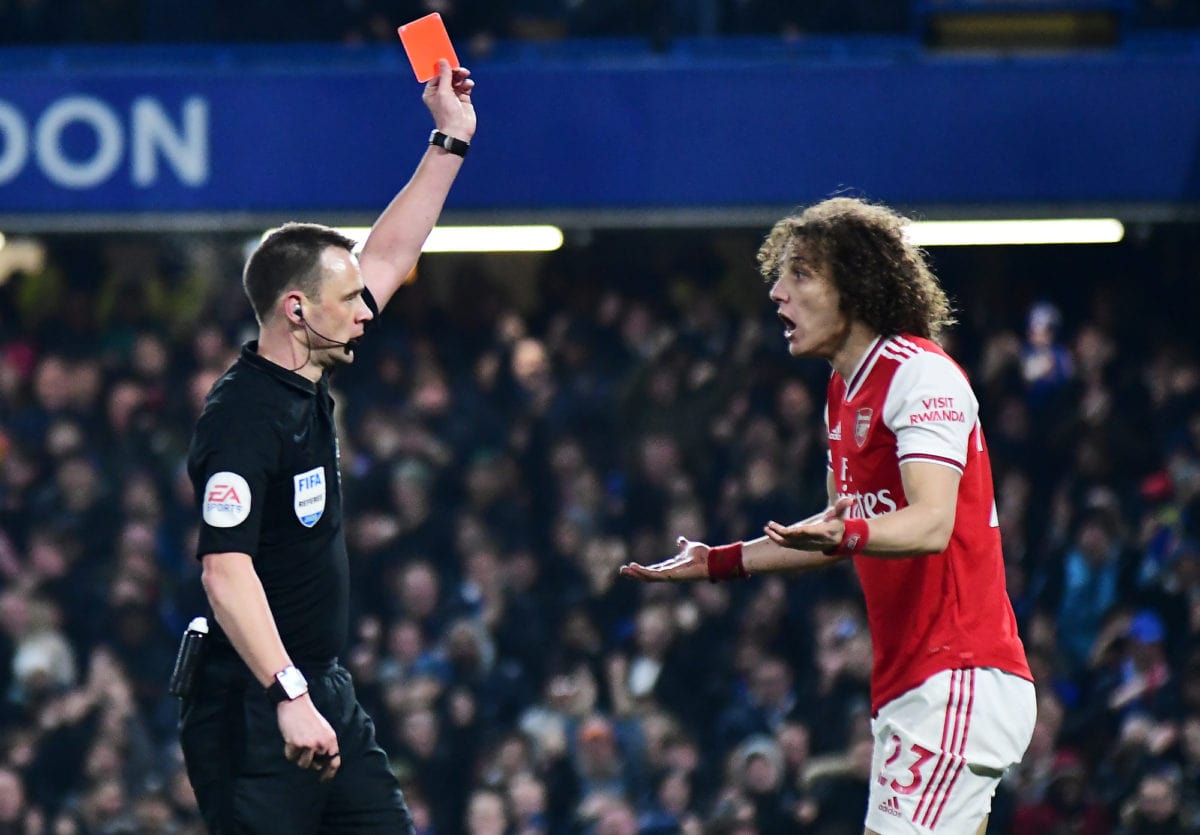
Red Card Rules For MLS + EPL
Soccer rules are international, so the same reasons that a red card is given in the MLS are the same in the English Premier League. The only difference in the rules is the punishment for the red card.
All soccer leagues worldwide need to follow the official rules from IFAB/FIFA – a World Cup would be crazy if we didn’t! The leagues can give their rules on disciplinary actions – suspensions and fines. The rules for suspension of a player after receiving a red card are as follows;
- 1 Game Ban – Two yellow cards
- 1 Game Ban – Minimal red card offense
- 2+ Game Ban – Serious foul play
The number of games a player is banned for depends on the offense’s seriousness. The player will automatically receive a one-game ban, and the committee will decide if the player deserves further game suspensions in the following days. There is also a consideration for how many other breaks a player has had in the season. Multiple red and yellow cards could lead to further suspensions.
23 May 2012. the Galaxy Go Down to 10 Men After a Red Card Was Given During the Major League Soccer Game Between the San Jose Earthquakes and The Los Angeles Galaxy at The Home Depot Center
Punishments for a Red Card
| League/Competition | Standard Suspension | Severe Offenses Notes |
|---|---|---|
| Premier League (England) | Minimum of 1 match | Longer for violent conduct or spitting |
| La Liga (Spain) | At least 1 match | Extended for severity of the offense |
| Bundesliga (Germany) | Minimum of 1 match | Longer bans for serious misconduct |
| Serie A (Italy) | 1 match | Multiple game suspensions for egregious actions |
| Ligue 1 (France) | At least 1 match | Lengthier suspensions for serious violations |
| Major League Soccer (USA) | Minimum 1 game | Additional sanctions by Disciplinary Committee |
| UEFA Champions League | 1 match | Extended suspensions by UEFA’s Ethics and Disciplinary Body |
| FIFA World Cup | At least 1 match | Longer suspensions by FIFA Disciplinary Committee |
| Copa Libertadores | Minimum 1 match | Extended based on offense nature |
| AFC Champions League | 1 match | Longer suspensions for serious infractions |
Additional Notes:
- Appeals: Teams can often appeal red card decisions, which may affect the final suspension.
- Cumulative Cards: Accumulation of yellow cards leading to a red card typically results in a one-match suspension.
- Disciplinary Records: A player’s past disciplinary record can influence the length of a suspension.
Type of Red Card and Typical Punishment
| Type of Foul | Typical Suspension | Additional Notes |
|---|---|---|
| Serious Foul Play | 1-3 matches | Longer for excessive force or endangering the safety of an opponent |
| Violent Conduct | 3+ matches | Includes striking, hitting, or any form of aggressive behavior |
| Spitting at an Opponent or Any Person (towards 3+) | 3-6+ matches | Considered one of the most serious offenses |
| Denying an Obvious Goal-Scoring Opportunity (DOGSO) | 1 match | If the foul denies a clear goal-scoring opportunity |
| Using Offensive, Insulting or Abusive Language/Gestures | 1-3 matches | Includes racial slurs or extremely offensive language |
| Second Caution in the Same Match | 1 match | Standard suspension for accumulating two yellows in a game |
| Deliberate Handball to Deny a Goal | 1-2 matches | If a player intentionally uses their hand/arm to block a goal |
| Serious Foul Play Leading to Injury | 3+ matches | If the foul results in a serious injury to the opponent |
Additional Considerations:
- Context of the Foul: The context and severity of the foul can lead to variations in the suspension length.
- Player’s Disciplinary Record: A player’s previous disciplinary record can influence the length of the suspension.
- League/Competition Rules: Different leagues and competitions may have specific rules that affect the length of suspensions.
- Appeals: Teams can appeal red card decisions, which may affect the final suspension.
This table provides a general guideline. For specific cases, the disciplinary committee of the respective league or competition reviews the incident and decides the appropriate punishment.
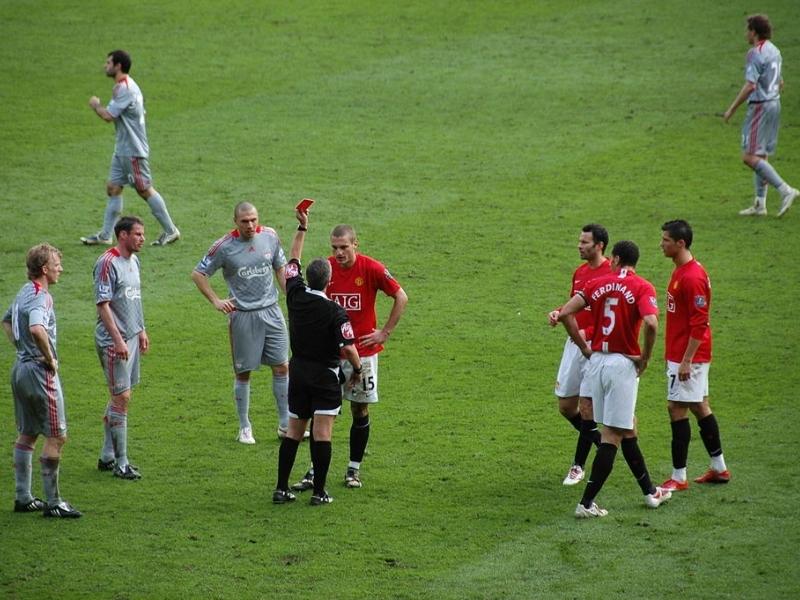
Official Red Card Soccer Rules
There are many opinions about when a red card should be shown in soccer, but the best place to get the rules is from the rule-makers: Football Federation International Football or FIFA, as they commonly know. These three stages are outlines of what a player should receive for their offense;
1. Careless Soccer Play
Carless – means that the player has shown a lack of attention or consideration when making his challenge or that they acted without precaution: no further disciplinary sanction is needed if a foul is judged to be careless.
FIFA Law 12
2. Reckless Soccer Play
Reckless – means that the player has acted with complete disregard of the danger to, or consequences for, his opponent: a player who plays in a reckless manner shall be cautioned.
FIFA Law 12
3. Using Excessive Force Soccer Play
Using excessive force – means that the player has far exceeded the necessary use of force and is in danger of injuring an on opponent: a player who uses excessive force shall be sent off
FIFA Law 12
Later, we’ll look at the seven reasons for a red card. First off, let’s look at these laws in detail.
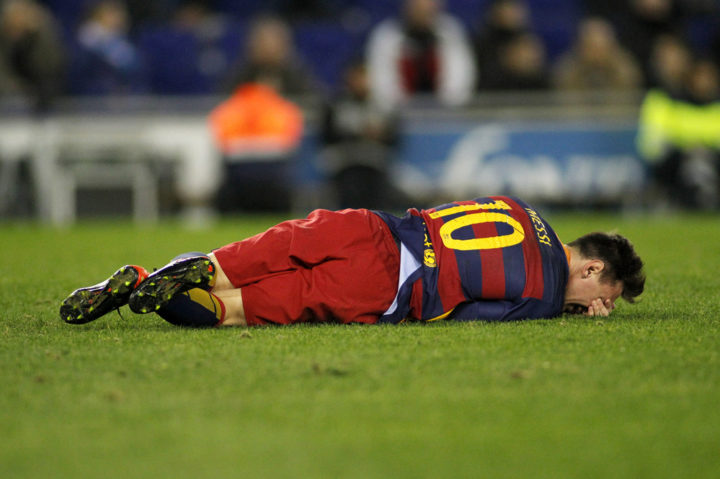
7 Rules For Red Cards In Soccer
So, above are the official rules for red cards, but what does that mean in real games? Let’s break it down to make it more
1. Using Excessive Force – Serious Foul Play
A player will receive a red car for using more than necessary force. For example, tackling a player whom the player intends to injure. If a player commits a violent foul intending to ‘harm,’ it’s a red card. For example, A player goes in to tackle someone, but the ball is far from the tackle – this can be seen as intentional because there was no chance that the player would win.
The referee needs to call whether the player meant to injure or if they just mistimed the tackle (it could be that the player is a lousy tackler, although being clumsy cannot be an excuse if someone is hurt). This is just one example where a player can be sent off, but there are many more.
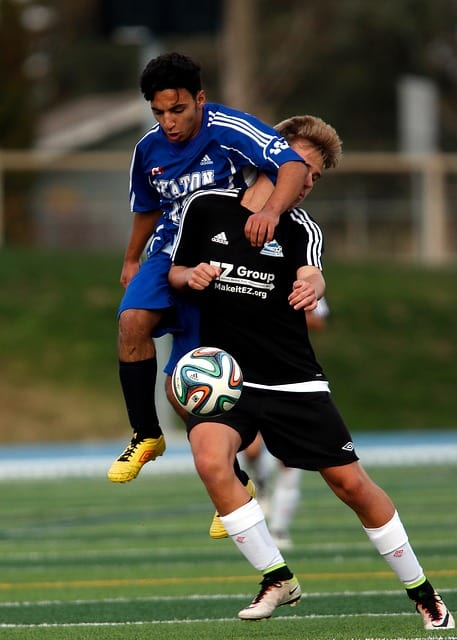
2. Lunging
If a player lunges or slides toward a player with their leg raised aggressively, the studs toward the opponent. One leg or two can come from the front, back, or sides. This is classified as ‘serious foul play.
Suppose a player commits an offense while the ball is still in play. The referee can let the sport continue to allow an advantage and give a red when the ball is out of space. If a player is out of control of where their leg is going because they can’t stop themselves, it’s a lunge.
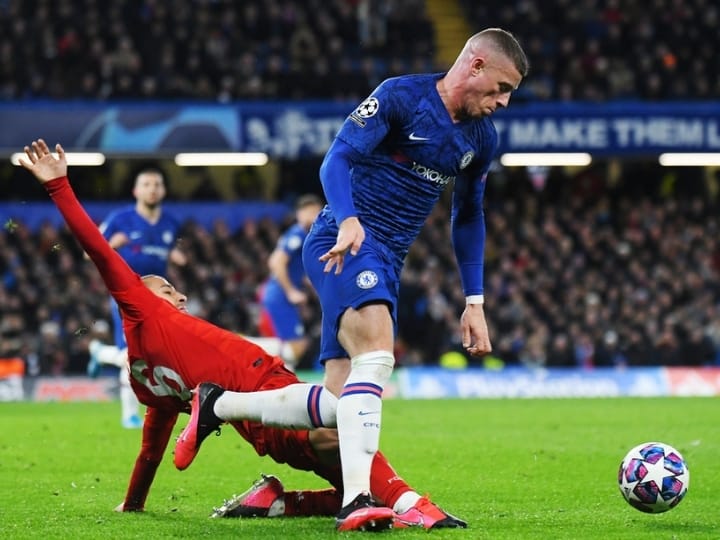
3. Violent Conduct
Excessive and brutal force when challenging a player, spectator, or another person. This can be when a player punches or kicks someone. It can be on the field of play or outside of it. It applies to players on the pitch and those on the bench. The referee will only allow play if there is a goal-scoring opportunity.
4. Object or Ball Thrown
If a player aggressively throws an object on the pitch or bench, the player will be shown a red card.
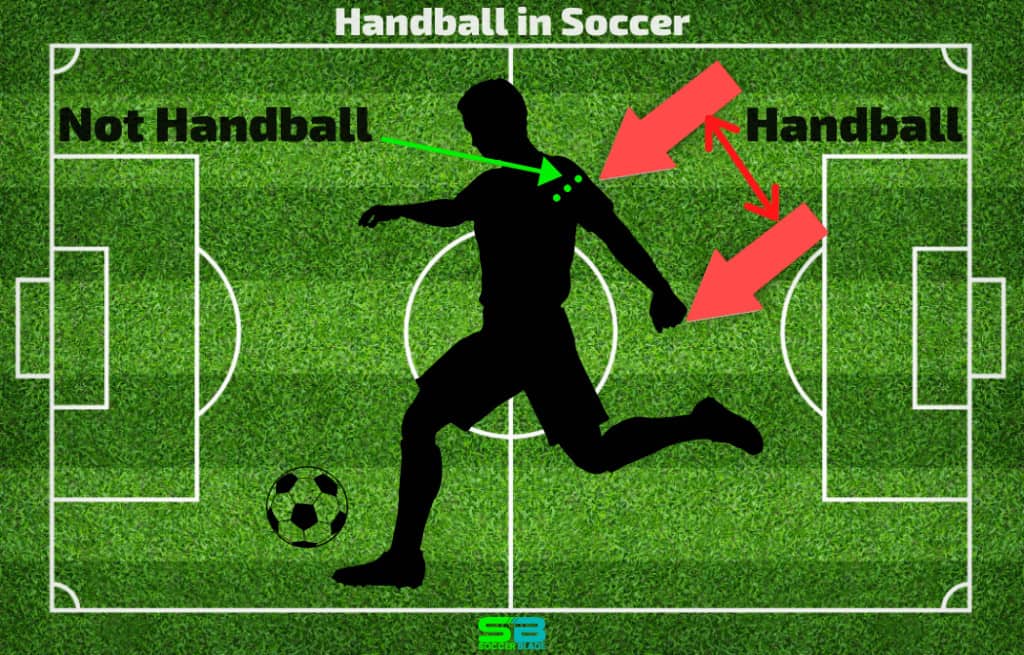
5. Denying a Goal or Scoring Opportunity
If a goal-scoring opportunity is denied, this can be inside the penalty box or outside. The referee allows play to continue as an advantage, and if a goal is scored, only a yellow card is given. The two offenses for this to happen are;
- Deliberate handball
- Any offense that would cause a freekick
The closer to the goal the offense occurs, the more likely a red card is given. Including if the ball would have gone into the goal if it were not for the handball. Along with other factors, such as the defenders’ positions and the direction of play.

6. Offensive, Insulting or Abusive Language
Any player who’s guilty of the above must be sent off. This can be towards any person, player, official, or spectator.
7. Two Yellow Cards
If a player is shown two yellow cards in a game, the referee will show the second yellow to the player and then the red card. The player must leave the field then and can no longer participate.
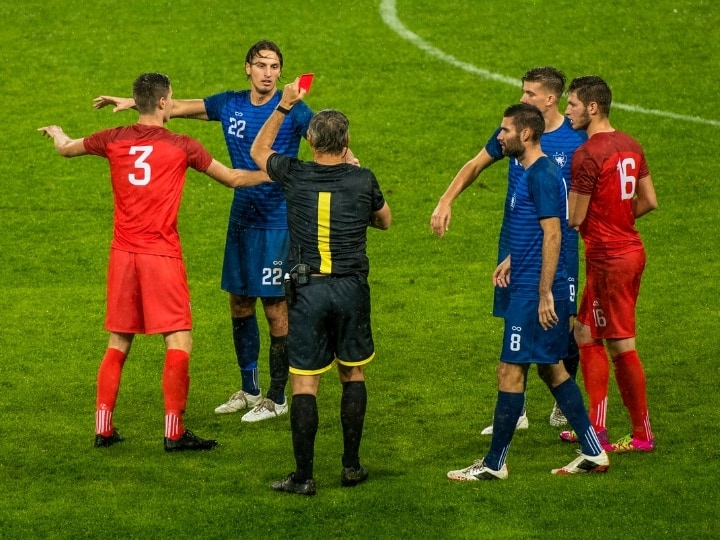
7 Reasons for A Red Card + Examples
- Serious foul play
- Violent conduct
- Spitting at a person
- Deliberate handball – denying a goal-scoring opportunity
- Denying an obvious goal-scoring opportunity
- Offensive, aggressive, abusive language or gesture
- Receiving a second caution
Here’s a detailed look at the seven reasons for a red card in soccer with examples;
1. Serious Fouls
A serious foul can badly hurt a player. These fouls are usually committed with excessive force. They’re considered ‘dangerous play’ in soccer. For example, tackling with your cleats up and connecting with a player’s leg. This type of tackle can break someone’s leg. Check out this video to get an idea of serious fouls:
2. Violence
Violent conduct will get you a red card in soccer. The referee will send you off if you hit or attack anyone on the soccer field. There’s no room for violent conduct in soccer. It’s very dangerous, especially if a group of players gets involved. But any violence will get you sent off, even against your team.
And, of course, against the other team. Zinedine Zidane had an infamous incident of violent conduct in the 2006 World Cup final. And he got sent off. See it below:
3. Deliberate handball to stop a goal
You’ll get a red card in soccer if you deliberately handle the ball to stop a goal. There are usually two scenarios when this can happen. The first is when a player crosses the ball to a teammate for an easy goal.
Imagine the ball in the air coming towards the attacking player for an easy tap-in. But then the defending player stops the ball with her hand. This will be a red card because it prevented a goal (or a clear goal-scoring opportunity).
The second happens when the ball is going for the goal. And it’s going to be a goal. But a player deliberately handles the ball to stop the goal. Luis Suarez’s deliberate handball in the 2010 World Cup quarter-final is a high-profile example. Check it out:
4. Deliberate Foul to Stop a Goal-Scoring Opportunity
You’ll get a red card in soccer if you deliberately commit a foul when someone has a good opportunity to score a goal. A player might be running toward the goalie with a good goal-scoring opportunity. You’ll get a red card if you foul that player deliberately, like a push or trip.
Before, any foul that stopped a goal-scoring opportunity could be a red card. But now, it’s only a red card if the referee judges the foul to be deliberate. So, any intentional foul to stop a goal-scoring opportunity will be an automatic red card.
5. Offensive and Abusive Behavior
It’s a red card in soccer for offensive and abusive behavior. This can be offensive and abusive language toward other players, officials, or fans. And it can be for offensive and abusive gestures. If you do this, you’ll get a red card in soccer.
6. Spitting at Someone
Spitting at someone is a red card in soccer. It should go without saying that there’s no place in soccer for spitting. If you spit at someone, the referee won’t hesitate to give you a red card.
7. Getting a Second Yellow Card
In soccer, getting 2 yellow cards equals a red card. So, if you get two yellow cards, you’ll be sent off the field.
How VAR Works with Red Cards
- Incident Occurs: When a potential red card incident occurs, such as serious foul play, violent conduct, or denying a clear goal-scoring opportunity, the on-field referee may decide based on their view.
- VAR Review: The VAR team in a remote control room immediately reviews the incident using various camera angles. They focus on “clear and obvious errors” or “serious missed incidents” in four game-changing situations: goals, penalty decisions, direct red card incidents, and mistaken identity.
- Communication with Referee: If the VAR team identifies a potential error in the referee’s initial decision, they inform the referee through an earpiece. The referee then has a few options:
- Overturn the Decision: The referee can immediately overturn their initial decision based on the VAR team’s input.
- On-Field Review (OFR): For more complex or subjective decisions, the referee may go to the side of the pitch to review the footage themselves on a monitor. This is known as an On-Field Review.
- Final Decision: The referee makes the final decision after reviewing the incident through VAR communication or an OFR. If the referee decides that a red card offense has occurred, they will issue a red card. If not, the play continues as usual.
Impact of VAR on Red Cards
- Accuracy: VAR helps increase the accuracy of red card decisions, ensuring that serious offenses are appropriately penalized, and wrongful red cards are avoided.
- Fairness: By reducing human error, VAR contributes to a fairer game where incorrect decisions are less likely to affect teams and players adversely.
- Controversy: Despite its benefits, VAR has also been controversial, with debates over its impact on the flow of the game and the subjectivity involved in interpreting video footage.
VAR represents a significant step forward in using technology to assist referees in making more accurate and fair decisions regarding red cards. While it has improved decision-making accuracy, it also brings new challenges and discussions about the nature of refereeing in the modern game.
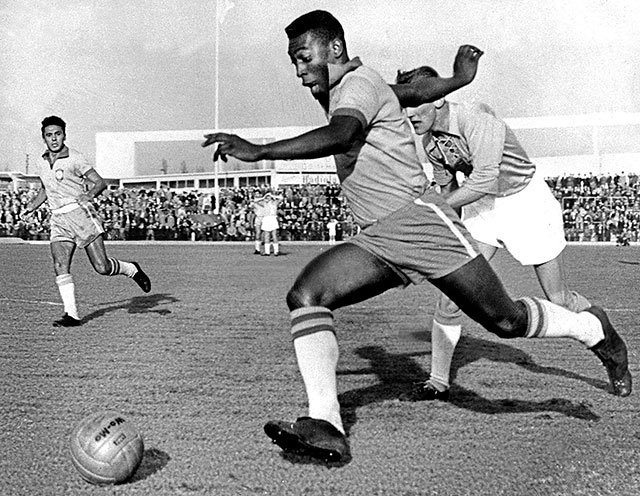
History of Red Cards in Soccer
Red and yellow cards came into the soccer game after the violence at the World Cup in 1962. The first foul in the match was after 12 seconds, and Kaplan International reports that the referee had returned to England and was driving home
“While I was driving the light turned red and I thought, ‘Yellow, calm down and red, stop, go out.’”
Referee Ken Aston
After this incident at the World Cup, it was another 8 years before red and yellow cards were introduced. In the 1970 World Cup in Mexico, cards were first used.
Timeline of Red Card Rule Changes in Soccer
Pre-1970s
- No Card System: Initially, soccer did not have a card system. Referees communicated decisions verbally or through gestures.
1970
- Introduction of Cards: The red and yellow card system was introduced in Mexico’s 1970 FIFA World Cup. Red cards were used for serious offenses, primarily violent play.
1980s
- Denying a Goal-Scoring Opportunity: A specific rule was introduced to issue a red card for denying an obvious goal-scoring opportunity, either by deliberate handball or a foul.
1990s
- Last Man Rule: Emphasis was placed on issuing red cards for fouls committed by the last defender denying a clear goal-scoring opportunity.
Early 2000s
- Tackles from Behind: FIFA emphasized red cards for dangerous tackles from behind, especially those endangering player safety.
2006
- Violent Conduct and Spitting: Rules were clarified to include violent conduct off the ball and spitting at an opponent or any other person as red card offenses.
2016
- Modification of Triple Punishment Rule: The rule was adjusted to issue a yellow card instead of a red in certain situations where a player commits a foul to deny a goal-scoring opportunity but makes a genuine attempt to play the ball.
2018
- VAR Introduction: The introduction of the Video Assistant Referee (VAR) system allowed for the review of red card decisions, leading to more accurate and fair rulings.
This timeline shows the progression from a system with no cards to a sophisticated set of rules designed to ensure player safety, fair play, and the integrity of the sport. The introduction of technology like VAR and ongoing refinements demonstrate soccer’s commitment to evolving with the times and addressing the needs of the modern game.
Process of Appealing a Red Card
- Immediate Aftermath: After a player receives a red card, the team has a limited time frame (often 24-48 hours) to appeal. This timeframe ensures a prompt review process.
- Submission of Appeal: The appeal is usually submitted in writing to the league or tournament governing body. It must typically include a fee and a detailed explanation of why the team believes the red card decision was incorrect. Supporting evidence, such as video footage, may also be included.
- Review by Disciplinary Committee: The appeal is reviewed by a disciplinary committee or panel appointed by the league or governing body. This committee reviews the evidence, including the referee’s report and any additional footage or testimonies.
- Hearing: In some cases, a hearing is held where representatives from the appealing team and possibly the match officials present their cases. Not all appeals lead to a formal hearing, depending on the league’s rules.
- Decision: After reviewing the evidence, the committee makes a decision. The timeframe for this decision varies but is usually within a week of the appeal being lodged to ensure any suspension is addressed promptly.
Potential Outcomes of the Appeal
- Appeal Upheld: If the appeal is successful, the red card is rescinded. This means the player’s record is cleared of that particular red card, and any automatic suspension is lifted.
- Appeal Rejected: If the appeal is unsuccessful, the original red card decision stands. The player must serve the suspension associated with the red card, which typically is at least one match but can be more for serious offenses.
- Reduced Punishment: In some cases, the committee may acknowledge some merit in the appeal but still uphold the red card. However, they might reduce the length of the suspension.
- Cost Implications: If the appeal is deemed frivolous or without merit, the appealing club might lose the appeal fee and potentially face additional fines.
Key Considerations
- Criteria for Appeal: Not all red cards are appealable. Generally, appeals are considered only if there is evidence of a clear and obvious error by the referee.
- Impact on Player and Team: The appeal process and its outcome can significantly impact the player and team, especially if the player is key to the team’s performance.
- Transparency and Fairness: The appeal process aims to ensure fairness and transparency in decision-making, allowing teams to contest decisions they believe are unjust.
The appeal process for a red card is a critical aspect of soccer governance, providing teams with a mechanism to contest decisions they believe are incorrect. While the process is rigorous to prevent frivolous appeals, it plays an essential role in maintaining the integrity and fairness of the sport. Red cards are rarely overruled, so be sure you’ve got a good case!
Share the post "Soccer Red Card Rules (Official With Examples)"
Joel is a seasoned soccer journalist and analyst with many years of experience in the field. Joel specializes in game analysis, player profiles, transfer news, and has a keen eye for the tactical nuances of the game. He played at various levels in the game and coached teams - he is happy to share his insight with you.



